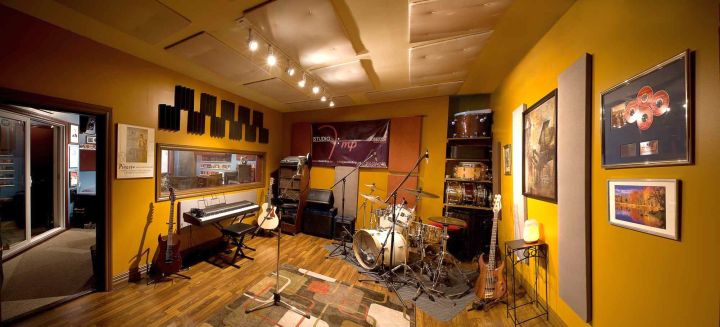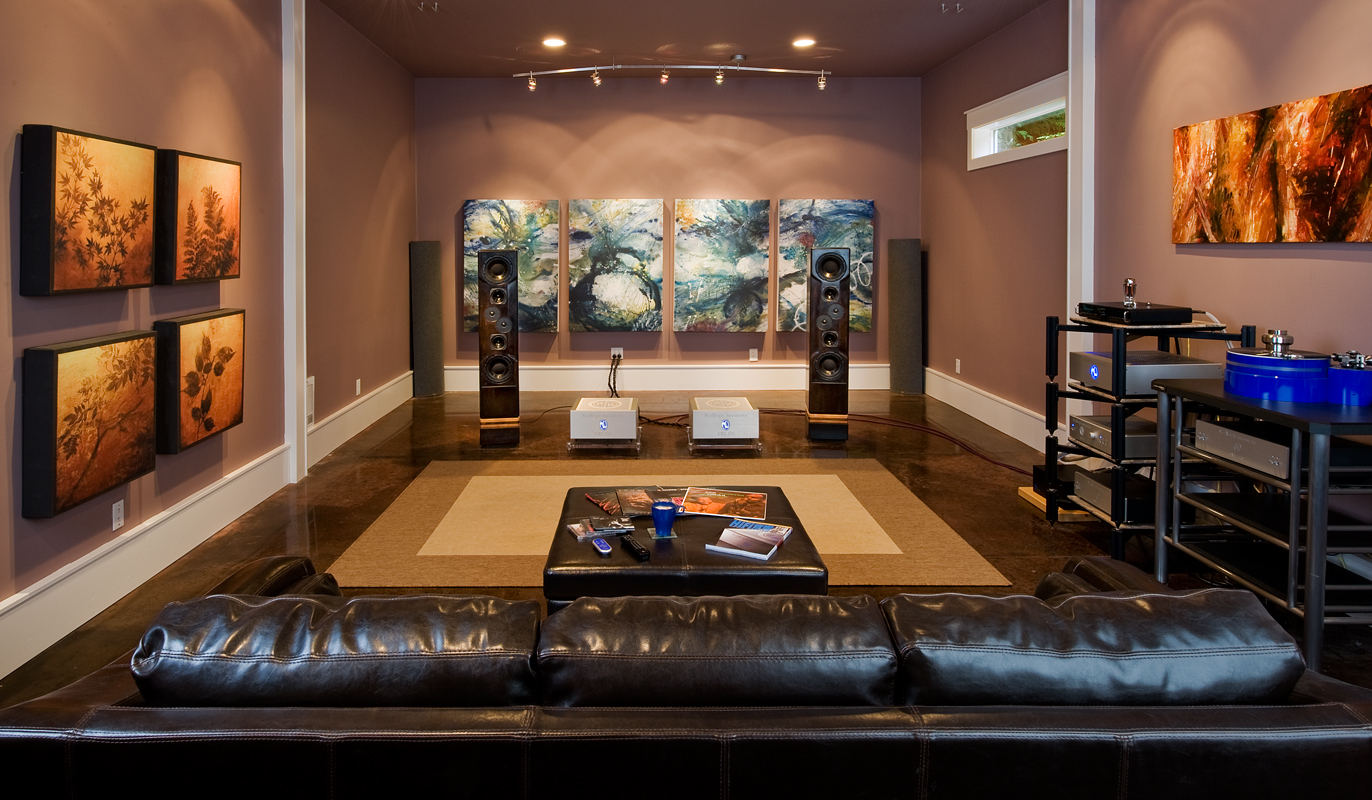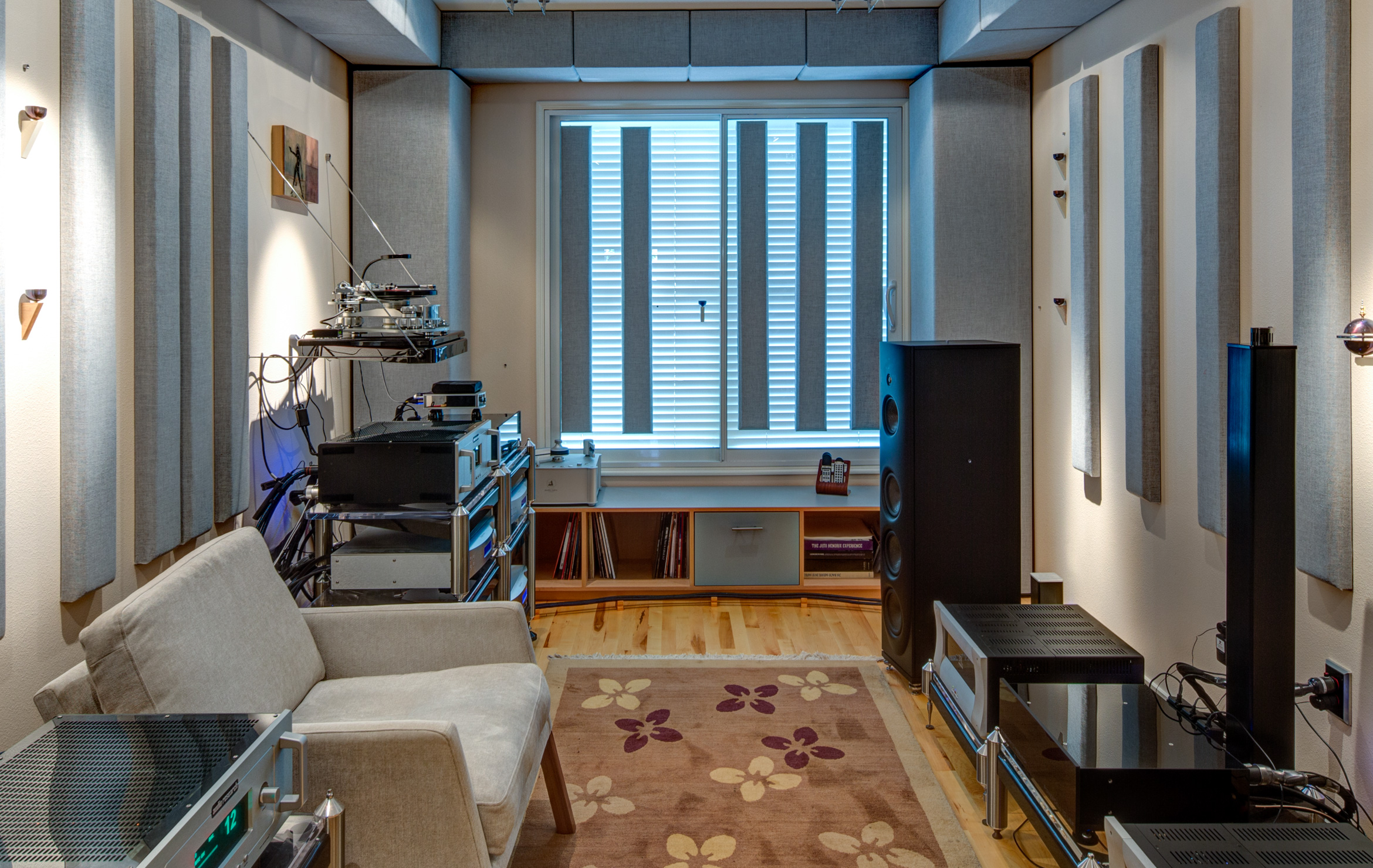

The smaller the room, the larger the low frequency pressure issue is. Look at the lowest wave like that the speaker produces, we need to have distance to allow for that wave to fit into the room dimensions. A 40-foot-long room and a 30-Hz wave works perfectly. In order for that energy to comfortably fit in a room, we have to have a room length that is some multiple of that lowest wavelength that the speaker produces. A 30-Hz sound wave is almost 37 feet long. Why do we need the length? Because most tower speakers are capable of producing bass frequencies down to at least 30 Hz. Not so much for reflections but for pressure, so we need the right length. Room length is very, very critical for pressure. So, we need to work with that distance next and that is also determined by speaker height and size of the room. The ceiling is the next reflection you hear after the floor. Look up, it’s right above you! So the reflections from the floor and ceiling must be managed. You are sitting directly under that 8-foot ceiling.

You can’t get much closer to the surface than sitting on it. Room height is critical also because floor and ceiling reflections are the first ones we hear. It is a marriage where no partner can be allowed to dominate. Once we have our speaker chosen, then we need to pick out the room size that will work for speaker height, radiation and diameter of all low-frequency drivers. Change one thing and you have to change all the others. It takes time to figure all of these things out. We need to define distance in terms of what the speakers’ requirements are, not what you think looks and works best. When I tell people that the width of the room is too small for their speakers, it’s because I know the narrow room width is going to combine with the radiation pattern of the speaker to create reflection issues. Each speaker, depending on the speakers’ design, has radiation requirements. We need space to do that.Įach speaker r adiates energy into space. The way we reduce the number of acoustical issues is by managing sound pressure and reflections. Sound pressure management and reflections The bottom line here is once we have matched the speaker to the room size and volume, then we can ask how much distance we need for the energy the speaker produces inside the room so we have fewer acoustical issues. It’s a good size speaker to work with - and quite honestly, you really don’t need anything larger in any size room but that’s a discussion for another time. Let’s take a standard size speaker that’s 4 feet tall.

If we figure out what those ratios are, what the speaker size and the room volume and size need to be, then we can figure out the actual room height, width and length we need.
#Listening room driver
Are we going to put a speaker with a 12-inch low-frequency driver in a room of 1,500 cubic feet? We do if we want to have so much low frequency energy that it will drive us out of the room. We have to be very, very careful about matching the amount of energy placed in the room to the room size and volume. Okay, so what are we going to do for room size and volume with two-channel playback? First question we need to answer is how much energy are we going to put in the room? How do we determine that? How big are our speakers? We need to match the room size that we have available, that we’re considering, to the speaker size.Īre we going to put a 7-foot-tall speaker in an 8-foot tall room? No, we want to put a smaller speaker in an 8-foot-tall room because 8 feet is a really bad room dimension for acoustics but it’s the standard distance that we have here in North America. Let’s do two-channel playback because that’s a popular one. So the first thing we have to define is the usage. Each usage dictates the treatment that we’re going to put inside the room. Is it two-channel playback? Is it home theater? Is it a control room? Is it a listening room? Because each usage dictates energy requirements and how large a room it should be. We have to decide what we are going to do musically in this room.

How do we determine what size room to build? Using a room that’s available is not necessarily the right answer. This is such an important issue because nearly everybody gets it wrong, and if you get it wrong in the beginning, getting good sound in that room is always going to be a struggle. In this article, we’re going to talk about the ideal room sizes and dimensions. SHARES Twitter 251 Facebook Email Print LinkedIn 6 Pinterest SMS WhatsApp


 0 kommentar(er)
0 kommentar(er)
